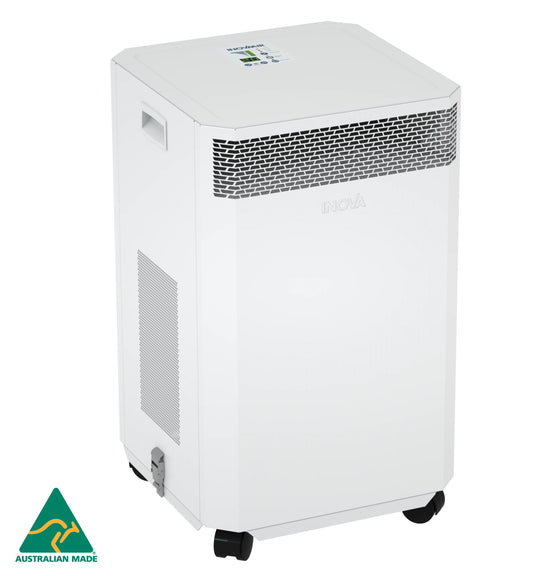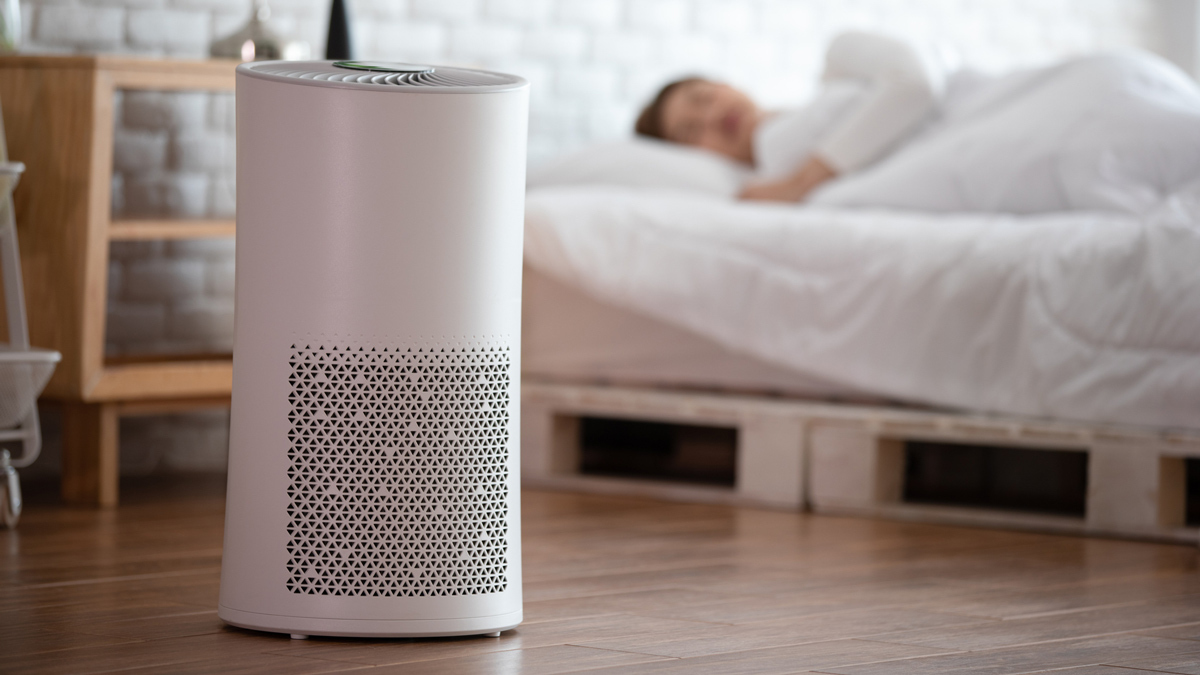Featured
Table of Contents
- – Recognizing Mold And Mildew and Its Wellness ...
- – Can Air Purifiers Aid Lower Mold And Mildew?
- – The Scientific Research Behind Air Purifiers ...
- – Are Air Purifiers Right for You When Battling...
- – A Multi-Pronged Method to Conquering Mold
- – Living Mold-Free: Beyond Air Purifiers
- – When to Employ the Experts
- – Verdict: A Breath of Fresh Air and a Mold-Fre...

Mold and mildew growth in your house can be a genuine problem. Not only does it produce unpleasant black patches and moldy smells, however it can likewise set off allergic reaction symptoms and breathing problems. Air cleansers are commonly suggested as an option, promising cleaner air and decreased exposure to mold and mildew spores. Yet are air purifiers truly worth it in the fight versus mold? This thorough overview explores the science behind mold, the role of air purifiers, and the elements to consider when choosing.
Recognizing Mold And Mildew and Its Wellness Consequences
Before delving right into air purifiers, let's clarify mold and mildew and its possible wellness dangers:
- Mold Essential: Mold and mildew is a fungus that prospers in wet settings. It recreates by releasing spores right into the air, which can be inhaled and cause various health troubles.
- Health Concerns: Direct exposure to mold spores can cause allergy signs like sneezing, coughing, scratchy eyes, and a drippy nose. In some cases, mold exposure can additionally result in respiratory system infections and worsen existing respiratory conditions like bronchial asthma.
- Mold Doesn't Differentiate: While some individuals are extra conscious mold than others, any person can experience health issue from prolonged exposure.
Can Air Purifiers Aid Lower Mold And Mildew?
Air cleansers can contribute in handling mold, yet it is necessary to recognize their restrictions:

- Trapping Spores: Air purifiers with HEPA filters can successfully record mold and mildew spores circulating airborne. This can help in reducing direct exposure and potentially relieve allergic reaction signs and symptoms.
- Minimal Effect On Source: Air cleansers do not remove the source of the mold problem. Mold and mildew removal is critical to attend to the origin and protect against more development.
- Dampness Control is Secret: Mold flourishes in damp environments. Air purifiers do not address moisture concerns. Without dealing with the underlying dampness issue, mold will likely return.
The Scientific Research Behind Air Purifiers and Mold And Mildew
While air cleansers can't eliminate mold and mildew itself, some research study recommends they can be a useful tool in taking care of mold exposure:
- A 2012 research published in the journal "Building and Environment" found that air cleansers with HEPA filters substantially minimized air-borne mold and mildew spore concentrations in a test setting.
- A 2015 review published in the journal "Present Allergy and Asthma Reports" concluded that air cleansers, alongside various other mold removal methods, can be beneficial in reducing mold-related signs and symptoms in allergic individuals.
However, it is essential to keep in mind some constraints:
- HEPA Filter Performance: HEPA filters are not 100% efficient at recording all mold and mildew spores, specifically extremely tiny ones.
- Filter Upkeep: Routinely changing HEPA filters according to the maker's guidelines is important for keeping ideal efficiency. Blocked filters lose efficiency.
Are Air Purifiers Right for You When Battling Mold? Elements to Think About
Here are some essential factors to think about when deciding if an air purifier deserves it for your mold and mildew scenario:
- Intensity of Mold Growth: For little mold and mildew patches, attending to the dampness source and removing the mold may be adequate. Air cleansers could be less critical. For substantial mold growth, an air purifier can be a valuable addition to your remediation strategy.
- Health Concerns: If you experience allergic reaction signs and symptoms or respiratory system issues presumed to be mold-related, an air purifier can offer some alleviation and boost interior air high quality.
- Dealing with the Resource: Bear in mind, air cleansers are not a replacement for proper mold and mildew remediation. Determining and dealing with the source of dampness that's causing the mold and mildew development is necessary for a long-term option.
A Multi-Pronged Method to Conquering Mold
While air cleansers can be a useful device, a comprehensive strategy is key to winning the battle versus mold:
- Wetness Control: The most important action is to determine and deal with the source of wetness that's enabling mold and mildew to grow. This might entail repairing dripping pipes, enhancing ventilation in washrooms and kitchens, or resolving condensation concerns.
- Mold Elimination: Professionals recommend expert mold and mildew remediation for extensive mold and mildew growth. They have the competence and equipment to safely get rid of mold and stop more spread. For little mold patches, you may be able to take care of elimination yourself, complying with safety standards.
- HEPA-Filtered Vacuuming: After mold removal, HEPA-filtered vacuuming can help remove staying mold spores from surfaces.
- Air Purifier Assimilation: Once the resource of the mold and mildew is resolved and the mold itself is eliminated, an air purifier can be a beneficial tool to capture continuing to be airborne spores and enhance indoor air top quality.
Living Mold-Free: Beyond Air Purifiers
Right here are some additional pointers to promote a mold-free setting:
- Maintain Low Indoor Moisture: Objective for a moisture level in between 30% and 50% utilizing a dehumidifier in moist climates. This helps stop mold development.
- Increase Air Flow: Boost air flow in your house by opening home windows frequently and making use of exhaust fans in restrooms and kitchen areas.
- Tidy and Dry Damp Surfaces: Without delay tidy and dry any moist surfaces, such as spills or condensation, to prevent mold and mildew from settling.
- Regularly Examine Prone Locations: Pay focus to areas susceptible to mold growth, like bathrooms, basements, and attics. On a regular basis examine for signs of mold and mildew and address dampness problems quickly.
- Consider Mold-Resistant Products: When refurbishing or changing structure materials, consider using mold-resistant alternatives, particularly in moisture-prone locations.
When to Employ the Experts
While some mold and mildew remediation jobs can be dealt with by yourself for little mold and mildew patches, there are situations where expert help is essential:
- Comprehensive Mold And Mildew Development: If you find a big area of mold and mildew growth, particularly if it covers even more than 10 square feet, it's best to employ an expert mold and mildew remediation firm. They have the competence and devices to safely get rid of the mold and avoid additional spread.
- Health and wellness Issues: If you or your member of the family experience consistent breathing issues or allergic reaction signs and symptoms believed to be mold-related, speaking with a health care expert and a mold remediation expert is advised.
- Concealed Mold: If you think mold growth behind wall surfaces or in crawlspaces, professional assistance is required to locate and remove the mold safely and successfully.
Verdict: A Breath of Fresh Air and a Mold-Free Home
Mold growth in your home can be a worrying concern, yet with the right approach, you can win the battle and develop a much healthier living environment. While air purifiers can be a useful device in managing mold and mildew direct exposure, remember they are not a standalone option. By attending to the source of dampness, applying proper mold and mildew remediation approaches, and incorporating preventative measures, you can breathe simpler in a mold-free home.
Added Factors To Consider:
- Air Top Quality Screening: For serious mold and mildew problems or if you have wellness problems, consider expert air top quality testing to evaluate mold spore degrees and assist your remediation efforts.
- Long-Term Tracking: After successful mold and mildew remediation, it's important to check your home for indicators of reoccurrence, particularly in locations previously vulnerable to mold and mildew development.
By taking a proactive technique and combining these techniques, you can produce a healthy and balanced and mold-free setting on your own and your family.
Table of Contents
- – Recognizing Mold And Mildew and Its Wellness ...
- – Can Air Purifiers Aid Lower Mold And Mildew?
- – The Scientific Research Behind Air Purifiers ...
- – Are Air Purifiers Right for You When Battling...
- – A Multi-Pronged Method to Conquering Mold
- – Living Mold-Free: Beyond Air Purifiers
- – When to Employ the Experts
- – Verdict: A Breath of Fresh Air and a Mold-Fre...
Latest Posts
Fascination About Can Yeti Ramblers Handle Dishwasher Cleaning?
Getting My Is Washing Yeti Ramblers In The Dishwasher A Good Idea? To Work
Are Air Purifiers Well Worth It for Allergic reactions? Breathing Easier with Science-Backed Solutions
More
Latest Posts
Fascination About Can Yeti Ramblers Handle Dishwasher Cleaning?
Getting My Is Washing Yeti Ramblers In The Dishwasher A Good Idea? To Work
Are Air Purifiers Well Worth It for Allergic reactions? Breathing Easier with Science-Backed Solutions